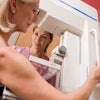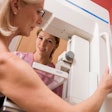
Remote delivery of tailored cancer screening interventions boost exam uptake among rural women, according to findings published April 28 in JAMA Network Open.
A team led by Victoria Champion, PhD, from Indiana University in Indianapolis found that by sending women in rural areas interactive DVDs along with over-the-phone patient navigation, the women were nearly six times more likely to undergo screening for breast, cervical, and colorectal cancers.
"This study supports the one-stop-shop approach as advocated by other researchers who also found that a screening intervention could simultaneously improve the uptake of more than one cancer screening test," Champion and colleagues wrote.
Rural cancer screening rates currently fall short of Healthy People 2030 goals: Individuals who live in geographic areas with less than 10,000 residents have a 12-point higher cancer mortality rate than their metropolitan counterparts. Sociodemographic factors tied to rural residents not receiving up-to-date screening include lower education levels, less knowledge about screening, lower income, poor access to health care, and greater social deprivation.
While interventions have been tested for outreach to residents in these areas, the Champion team noted that none have been tested for a simultaneous increase in guideline-recommended breast, cervical, and colorectal cancer screenings for women.
Champion's group sought to evaluate the effectiveness of two interventions: a mailed, interactive DVD with messages tailored to each woman's responses to a survey followed by patient navigation/coaching by phone. The researchers wrote that these interventions were tailored to the unique barriers, needs, and experiences of rural women.
They compared intervention groups with usual care for increasing the percentage of women who were up to date with all recommended breast, cervical, or colorectal cancer screening. They also assessed the costs and cost-effectiveness of these interventions.
The study included 963 women between the ages of 50 to 74 recruited between 2016 (first baseline interview) and 2019 (last baseline interview) from 98 rural Indiana and Ohio counties. They were randomized into three groups: DVD only (382 women), DVD plus telephonic patient navigation (388 women), and usual care (193 women).
The researchers found that the intervention groups significantly increased the odds of women obtaining all necessary screenings. For instance, the DVD group had nearly twice the odds of those in the usual care group of obtaining all needed screenings (odds ratio, 1.84; p = 0.048). The team also found that the odds were nearly six times greater for DVD plus patient navigation versus usual care (odds ratio [OR], 5.69; p < 0.001).
However, when it came to promoting at least one of the needed screenings at 12 months, only the DVD plus patient navigation intervention was also found to be significantly more effective than usual care (OR, 4.01; p < 0.001).
The researchers also found that the cost-effectiveness per woman who was up to date with screening exams was $14,462 in the DVD group and $10,638 in the DVD plus patient navigation group. Reports indicate that cancer treatment costs about $150,000 per patient in the U.S.
"Thus, the additional costs required for the addition of patient navigation to improve screening may result in cost savings by avoiding cancer deaths or treatment at more advanced stages," the study authors noted.
They also wrote that the effectiveness of these interventions offer a holistic approach to preventive healthcare, "fostering cancer prevention and early detection when a cure is realistic and ultimately decreasing cancer health disparities."




















